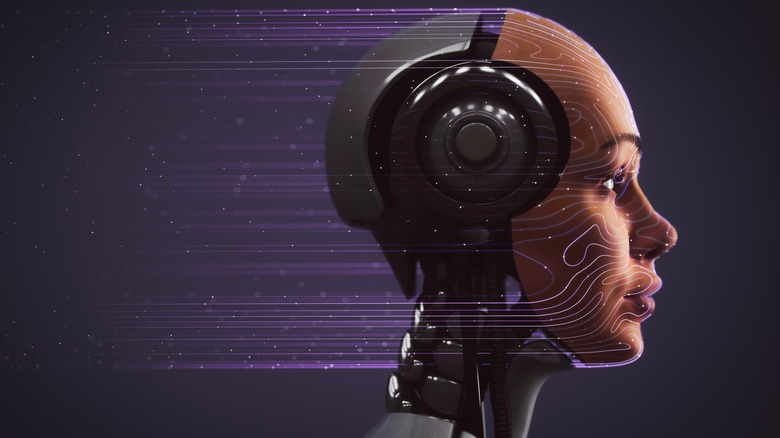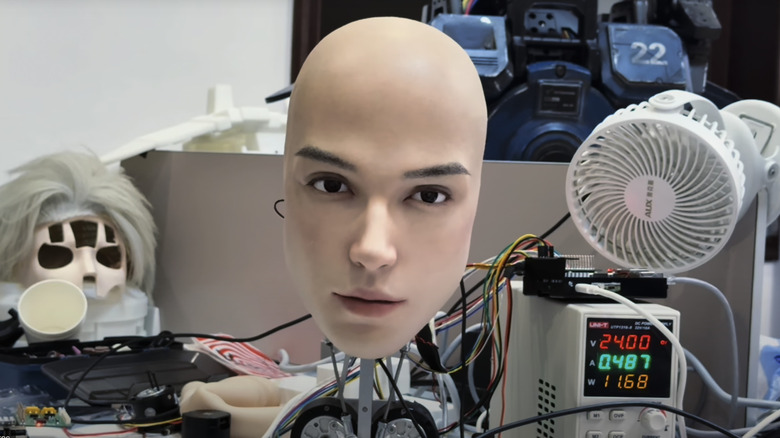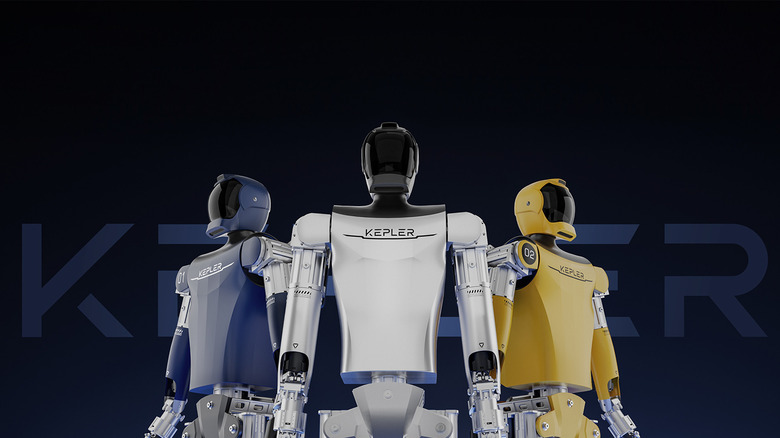China's AI Robots Are Shocking The World With Their Humanoid Characteristics
In the rapidly developing world we live in, it feels as if every day there is a new technological advancement, so much so that it's difficult to keep track of. The world of AI and robotics is no exception to this, to the point where new advancements just fly under the radar, given the overwhelming amount of work being done in those fields. And if there is one country that is pioneering these advancements, it's China, which has even created pregnancy robots.
Two Chinese companies at the top of their games right now, AheadForm and Kepler Robotics, are helping drive China's tech revolution with their humanoid robots. AheadForm is a robotics company that specializes in producing humanoid robots capable of expressing scarily believable facial movements and emotions. Kepler, on the other hand, focuses on advanced movement and dexterity capabilities with robots such as the K2 Bumblebee, which can move with a human-like fluidity and balance that few others can.
An eerie video from AheadForm recently did the rounds and left many viewers feeling uneasy thanks to the lifelike movements of the robotic head when blinking, gazing, and responding to its environment. The robot was part of the company's Elf series, which explores how emotion and motion can merge into machines that seem conscious of their surroundings. Meanwhile, Kepler Robotics is taking on a different challenge, one with the final goal of creating humanoid robots with a natural sense of motion.
AheadForm's expressive faces aim to humanize robots
At the heart of AheadForm's design philosophy is the belief that emotions and facial expressions are just as integral to communication as words are. Hu Yuhang, the founder of the Chinese company, is a firm believer in realistic expression being the foundation of making the work done between people and robots feel easier and more natural. His team's humanoid heads utilize a self-supervised AI and bionic motors that move and bend under soft, synthetic skin. Software that mimics how real facial muscles respond to emotion controls every micro-movement, from blinking to frowning, in a frighteningly realistic capacity.
The company's main prototype, "Xuan," can display a multitude of emotions through speech, eye movements, and expression that all work synchronously. This realism is made possible thanks to a special brushless motor that makes chillingly quiet and precise movements. It lets the robots make small adjustments to things like eyelids or lips, allowing for subtle gestures that most robots can't copy.
AheadForm believes that service robots with this level of human-like expressiveness will be more relatable and approachable if used in schools, healthcare, and customer-facing roles, but that might not be to everyone's liking. Those who are critical of the hyperrealistic faces may be made to feel uneasy by the similarity, preferring the robots to remain recognizable as what they really are. Either way, the company's work shows how emotional AI is becoming a defining feature of the next generation of China's advanced humanoid robots.
Kepler's K2 Bumblebee redefines robotic motion
AheadForm looks at the faces of future machines, but Kepler Robotics is more interested in their bodies and movements. The K2 "Bumblebee" humanoid robot can walk on bricks, grass, and plastic surfaces with amazing balance. It can even stay upright when pushed. The robot walks so steadily thanks to its hybrid actuation design that combines strong linear actuators with rotary joints to make motion that looks surprisingly human.
Kepler's engineers designed the system to mimic human legs, where larger muscles act as the base for structure and strength, while small joints control the precise movements that require more finesse. The company reckons this setup lets the humanoid robots walk with straight knees, move more smoothly, and use energy more efficiently. The Bumblebee can understand natural language, learn through reinforcement, and control torque. This means it can understand voice commands and change its steps to fit different situations.
During a recent robotics conference, the K2 demonstrated these capabilities live, interacting with guests and showing off refined hand dexterity. With 52 degrees of freedom, 80 in-house sensors, and an operational time of up to eight hours per charge, Kepler calls it a "blue-collar humanoid" built for industrial labor. While there are a few companies working on humanoid robots, not many have operational examples like this. Together, AheadForm's emotional realism and Kepler's physical dexterity show that China's robotics industry is racing toward a future where machines not only move like us, but feel strangely close to being one of us.


